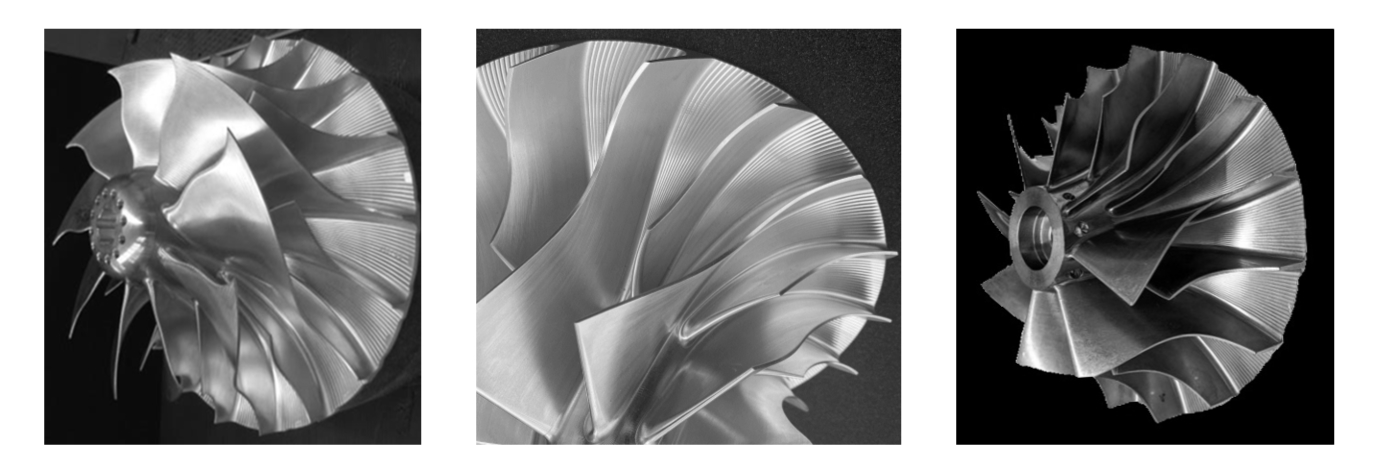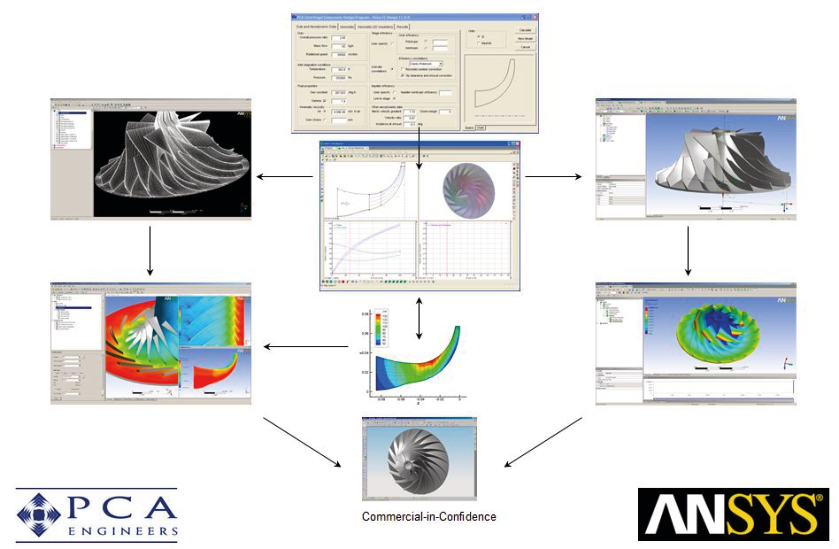Services
Turbomachinery design

Empirical expertise
PCA's legacy of empirical design knowledge, built over decades of experience, covers a broad range of machinery types and working fluids, from perfect gases to more complex mixtures of real gases and liquids. The fundamental principles of turbomachinery design are well-established and common across different classes of machine. However, each new design presents specific challenges in, for example, high Mach number, high temperature, cost or space constraints. There is no substitute for PCA's past experience in achieving successful designs, coupled with innovative use of the latest methods and technology, to reach tomorrow's goals.
Machine types
PCA has proven, current experience in designs of most classes of turbomachine, including:
|
|
|
|
|
|
|
|
Design systems
Successful design of turbomachinery is built from a solid foundation of 1D empiricism which respects the fundamental equations and loading parameters. PCA have developed a range of tools for this purpose [Software] many of which are integrated into ANSYS Workbench.
For the next step - the development of the design in 2D - PCA's range of streamline curvature tools are unrivalled in the public sector. Despite the accessibility of 3D commercial tools, the bulk of the design process is more effectively developed with 2D throughflow codes, particularly in multistage axial machines where the degrees of freedom increase rapidly with stage count. 2D analysis holds its long-established position as the pre-eminent multistage design tool in most, if not all, leading OEMs in the field.
However, optimisation of designs in 3D using commercial CFD and FEA codes is essential for maximising performance and minimising development. PCA uses industry-leading tools from ANSYS (CFX and Mechanical) making full use of the packages' advanced features, such as optimisation, unsteady flow analysis and combined aero-mechanical techniques of forced response and flutter.

Typical project scope
The client sets the target performance and specifies design constraints such as: package size and shaft speed. Ahead of making an offer to undertake the design, PCA carries out its own due diligence to establish that the targets are achievable, interacting with the client, to arrive at a sound specification for the project, including the boundary conditions and extent of supply. PCA then formalises the quote with a proposal, normally offered at fixed-price, together with timescale, list of deliverables and terms and conditions of supply. Once the project is launched, regular communication takes place via Microsoft Teams to provide an opportunity to assimilate the client's specific knowledge of their application and to monitor progress against technical and programme objectives. On completion, deliverables include the 3D description of the gas-swept geometry and solid models of any components that have been subjected to mechanical analysis, with a comprehensive design report. Where clients are using similar analysis tools, often CFD and FE input and output files will also be delivered. Downstream of the delivery, PCA supports interaction during assimilation for manufacture and during the validation process. This is considered part of our service to clients.